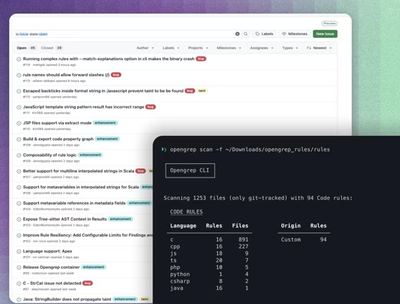
Research
Security News
Lazarus Strikes npm Again with New Wave of Malicious Packages
The Socket Research Team has discovered six new malicious npm packages linked to North Korea’s Lazarus Group, designed to steal credentials and deploy backdoors.
@brainfish-ai/solid-components
Advanced tools
Those templates dependencies are maintained via [pnpm](https://pnpm.io) via `pnpm up -Lri`.
Those templates dependencies are maintained via pnpm via pnpm up -Lri.
This is the reason you see a pnpm-lock.yaml. That being said, any package manager will work. This file can be safely be removed once you clone a template.
$ npm install # or pnpm install or yarn install
In the project directory, you can run:
npm run dev or npm startRuns the app in the development mode.
Open http://localhost:3000 to view it in the browser.
The page will reload if you make edits.
npm run buildBuilds the app for production to the dist folder.
It correctly bundles Solid in production mode and optimizes the build for the best performance.
The build is minified and the filenames include the hashes.
Your app is ready to be deployed!
You can deploy the dist folder to any static host provider (netlify, surge, now, etc.)
In order to use the components as SolidJS components in a SolidJS package, follow this example on how to use ActionButtons.
import { ActionButtons } from '@brainfish-ai/solid-components'; // import component
import styles from '@brainfish-ai/solid-components/styles?inline'; // import styles
...
// use it as per normal
<ActionButtons actions={props.searchIntent.actions} />
To use it as part of a web component, the styles will need to be injected into the ShadowDOM:
import { ActionButtons } from '@brainfish-ai/solid-components'; // import component
import styles from '@brainfish-ai/solid-components/styles?inline'; // import styles
...
// use it as per normal
<ActionButtons actions={props.searchIntent.actions} />
In order to use the components as web components in an environment that doesn't use SolidJS, eg. ReactJS, do the following:
// create a wrapper component for the web component.
import type { ActionButtonsProps } from '@brainfish-ai/solid-components';
import React, { useEffect, useRef } from 'react';
declare global {
namespace JSX {
interface IntrinsicElements {
'action-buttons': React.DetailedHTMLProps<
React.HTMLAttributes<HTMLElement>,
HTMLElement
> & { class?: string };
}
}
}
type ActionButtonsElement = HTMLElement & ActionButtonsProps;
const ActionButtons: React.FC<ActionButtonsProps> = ({ ...actions }) => {
const ref = useRef<ActionButtonsElement | null>(null);
useEffect(() => {
// Dynamically import the web components
(async () => {
await import('@brainfish-ai/solid-components/web-components');
})();
// No cleanup function is needed for this effect
}, []); // Empty dependency array means this effect runs once on mount
useEffect(() => {
if (!ref.current) {
return;
}
Object.assign(ref.current, actions);
}, [actions]);
return <action-buttons ref={ref} />;
};
export default ActionButtons;
FAQs
Those templates dependencies are maintained via [pnpm](https://pnpm.io) via `pnpm up -Lri`.
The npm package @brainfish-ai/solid-components receives a total of 205 weekly downloads. As such, @brainfish-ai/solid-components popularity was classified as not popular.
We found that @brainfish-ai/solid-components demonstrated a healthy version release cadence and project activity because the last version was released less than a year ago. It has 0 open source maintainers collaborating on the project.
Did you know?

Socket for GitHub automatically highlights issues in each pull request and monitors the health of all your open source dependencies. Discover the contents of your packages and block harmful activity before you install or update your dependencies.

Research
Security News
The Socket Research Team has discovered six new malicious npm packages linked to North Korea’s Lazarus Group, designed to steal credentials and deploy backdoors.

Security News
Socket CEO Feross Aboukhadijeh discusses the open web, open source security, and how Socket tackles software supply chain attacks on The Pair Program podcast.

Security News
Opengrep continues building momentum with the alpha release of its Playground tool, demonstrating the project's rapid evolution just two months after its initial launch.